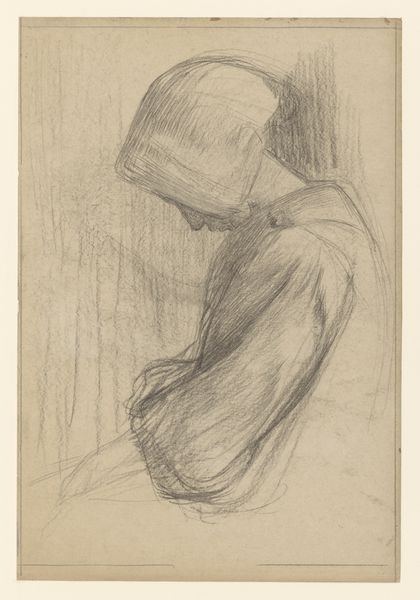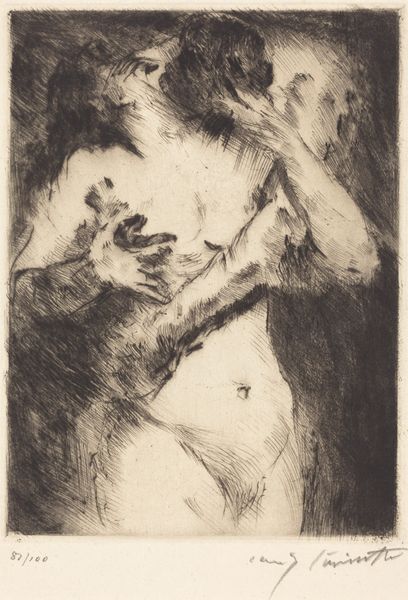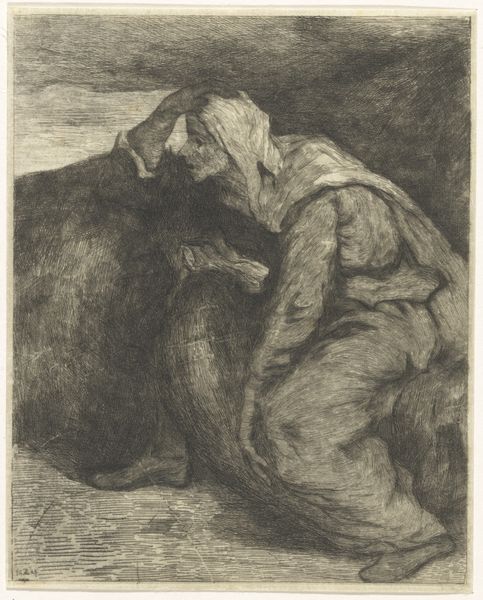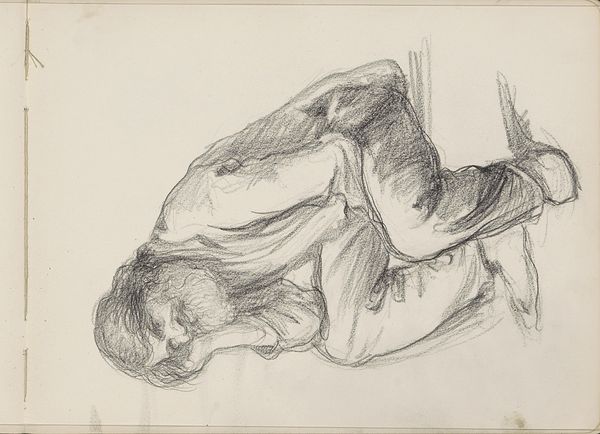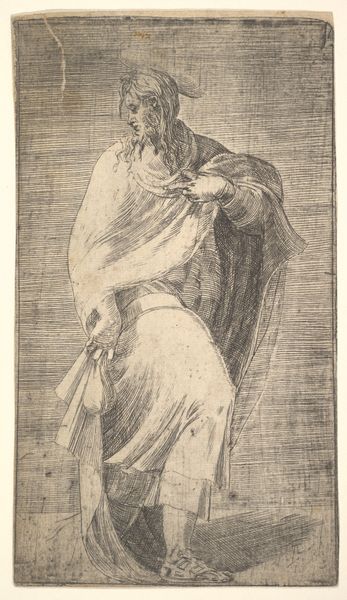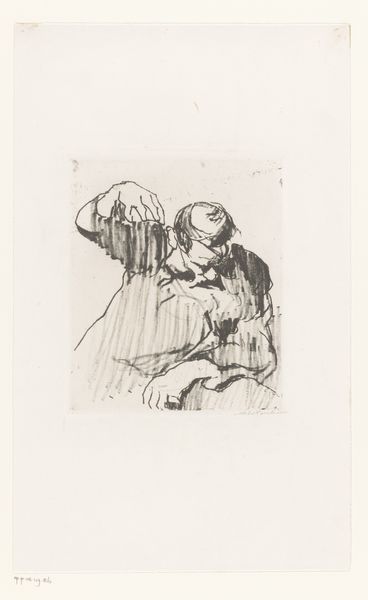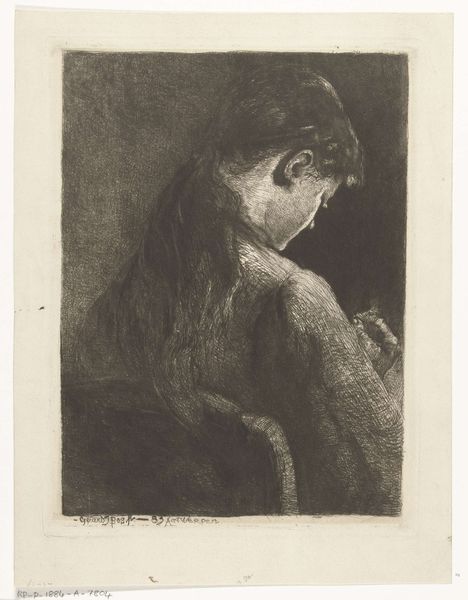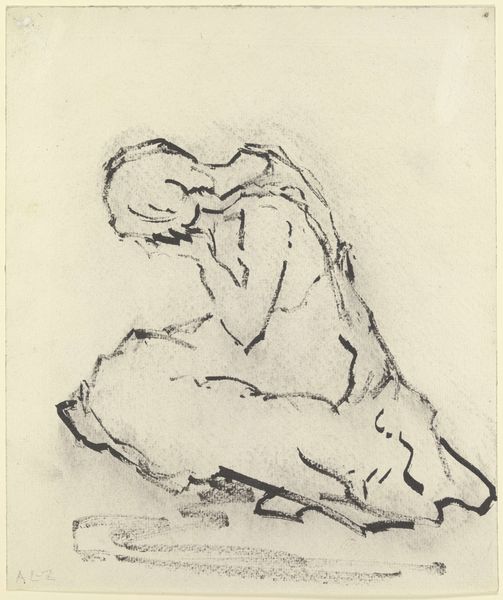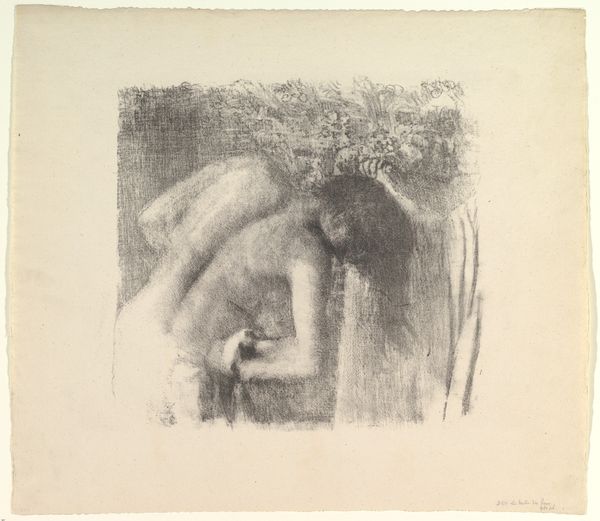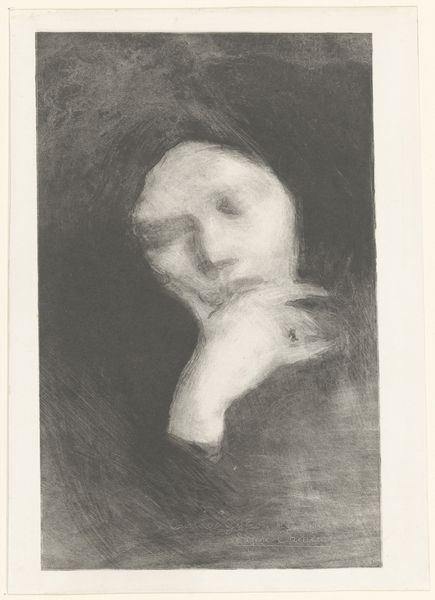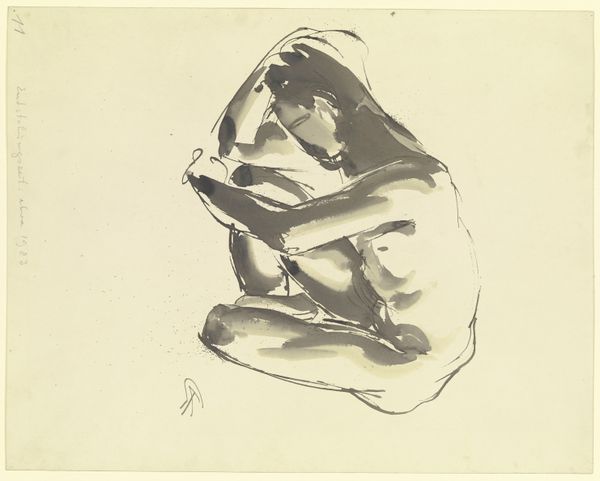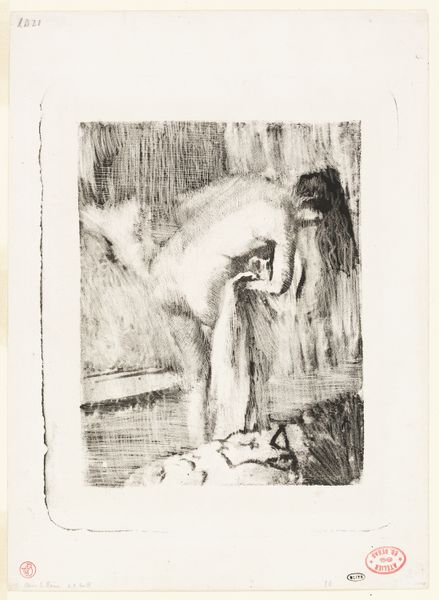
Dimensions: image: 9 13/16 x 9 1/16 in. (25 x 23 cm) stone: 11 7/16 x 9 1/4 in. (29 x 23.5 cm) sheet: 14 3/4 x 10 5/8 in. (37.5 x 27 cm)
Copyright: Public Domain
Edgar Degas made this lithograph, "After the Bath III," using crayon and tusche on stone. It depicts a woman drying herself, an intimate, domestic scene that offers insight into late 19th-century French society's complex relationship with the female body. Degas, working within the Impressionist circle, distanced himself from academic traditions. Rather than idealizing the female form, he presents a naturalistic, unposed figure. The bather is not a mythological nymph or an allegorical figure, but an ordinary woman in a private moment. This shift reflects a broader cultural move toward Realism, challenging the art institution's established norms. We must consider the historical context to fully understand this work. Contemporary medical and scientific discourses influenced perceptions of the body. Social class also played a role, as depictions of women often reinforced bourgeois ideals. By studying such cultural forces, we can appreciate the ways in which Degas both reflected and challenged the social structures of his time.
Comments
No comments
Be the first to comment and join the conversation on the ultimate creative platform.
